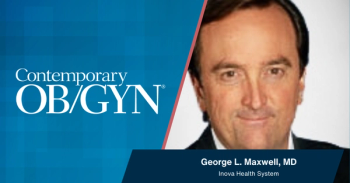
The Most Hotly Anticipated Ob/Gyn Research of 2014
New research expected this year will bring about significant changes to clinical practice. Here, society leaders share what’s on their radar for 2014.
New drugs, new research, new technology … there’s a lot for ob/gyns to look forward to in the coming year. Here, the leaders of five ob/gyn societies share the most interesting, important, exciting things on their radar for 2014.
(See what they thought was the most important research to come out of 2013
continued
[[{"type":"media","view_mode":"media_crop","fid":"23567","attributes":{"alt":"","class":"media-image media-image-left","id":"media_crop_5499654868617","media_crop_h":"0","media_crop_image_style":"-1","media_crop_instance":"1890","media_crop_rotate":"0","media_crop_scale_h":"0","media_crop_scale_w":"0","media_crop_w":"0","media_crop_x":"0","media_crop_y":"0","style":"line-height: 1.538em; float: left; margin-left: 0px; margin-right: 0px;","title":" ","typeof":"foaf:Image"}}]]“Many more trials evaluating novel antitumor therapies will be reported in 2014. A big challenge is identifying methods to predict who is most likely to respond to these targeted therapies. Other anticipated studies are Gynecology Oncology Group studies (now part of
“We should also hear if the combination of radiation and chemotherapy is superior to chemotherapy alone in the postoperative treatment of women with advanced endometrial cancer. Finally, we hope that the results of the UK ovarian cancer screening
- Barbara A. Goff, MD, President, Society of Gynecologic Oncology
[[{"type":"media","view_mode":"media_crop","fid":"23568","attributes":{"alt":"","class":"media-image media-image-left","id":"media_crop_8970277262851","media_crop_h":"0","media_crop_image_style":"-1","media_crop_instance":"1891","media_crop_rotate":"0","media_crop_scale_h":"0","media_crop_scale_w":"0","media_crop_w":"0","media_crop_x":"0","media_crop_y":"0","style":"line-height: 1.538em; float: left;","title":" ","typeof":"foaf:Image"}}]]“I’m looking forward to the results from the
- Margery Gass, MD, NCMP, Executive Director, The North American Menopause Society
[[{"type":"media","view_mode":"media_crop","fid":"23569","attributes":{"alt":"","class":"media-image media-image-left","id":"media_crop_6041314275935","media_crop_h":"153","media_crop_image_style":"-1","media_crop_instance":"1912","media_crop_rotate":"0","media_crop_scale_h":"0","media_crop_scale_w":"0","media_crop_w":"350","media_crop_x":"0","media_crop_y":"84","style":"line-height: 1.538em; float: left; height: 87px; width: 200px;","title":" ","typeof":"foaf:Image"}}]]
“The results of the large (>15,000 participants) noninvasive prenatal testing (NIPT) ‘low-risk’ study, to see if we can start offering NIPT to all pregnant women.”
- Vincenzo Berghella, MD, President, Society of Maternal-Fetal Medicine
“The studies we’re waiting for in 2014 would be the results of the
- George R. Saade, MD, Past President, Society for Maternal-Fetal Medicine
[[{"type":"media","view_mode":"media_crop","fid":"23570","attributes":{"alt":"","class":"media-image media-image-left","id":"media_crop_9292961589526","media_crop_h":"0","media_crop_image_style":"-1","media_crop_instance":"1895","media_crop_rotate":"0","media_crop_scale_h":"0","media_crop_scale_w":"0","media_crop_w":"0","media_crop_x":"0","media_crop_y":"0","style":"line-height: 1.538em; float: left; height: 61px; width: 130px; border-style: solid;","title":" ","typeof":"foaf:Image"}}]]
“The results of the OPTIMAL trial, published in
“We will also be learning that the bladder may have more bacteria in it than we thought.”
- Charlie Nager, MD, President, American Urogynecologic Society
[[{"type":"media","view_mode":"media_crop","fid":"23571","attributes":{"alt":"","class":"media-image media-image-left","id":"media_crop_3950970829464","media_crop_h":"0","media_crop_image_style":"-1","media_crop_instance":"1896","media_crop_rotate":"0","media_crop_scale_h":"0","media_crop_scale_w":"0","media_crop_w":"0","media_crop_x":"0","media_crop_y":"0","style":"line-height: 1.538em; margin: 0px; float: left;","title":" ","typeof":"foaf:Image"}}]]“After Richard Scott, MD, of
“Another major finding to look forward to involves being able to assess the quality of embryos in order to select those that are normal and that are the best to put back into the recipient. This involves a procedure called time lapse imaging microscopy, which is getting a lot of attention. There is very good preliminary evidence that strongly suggest that embryos undergoing cell division at exact intervals are the ones that give rise to live births. I’ve been told a randomized controlled trial has been completed that confirmed these findings, and I suspect we’re going to see something shortly. As soon as these findings are published, I expect every single IVF clinic in the world will get this equipment. There is a possibility that it could dramatically improve the live birth rate, and several clinics have already purchased the equipment.”
- Andrew La Barbera, PhD, Scientific Director, American Society for Reproductive Medicine
Newsletter
Get the latest clinical updates, case studies, and expert commentary in obstetric and gynecologic care. Sign up now to stay informed.










